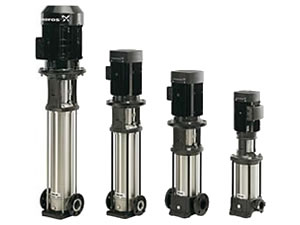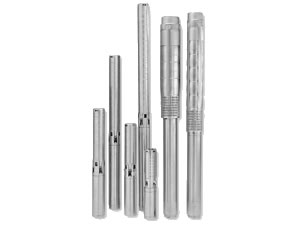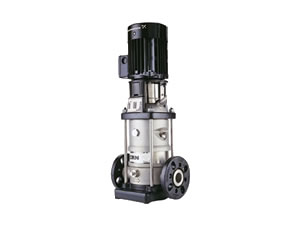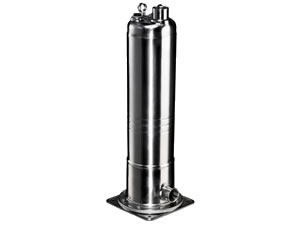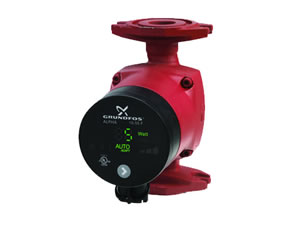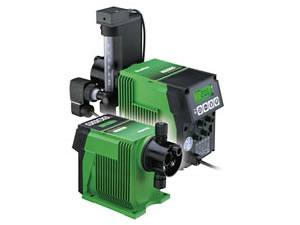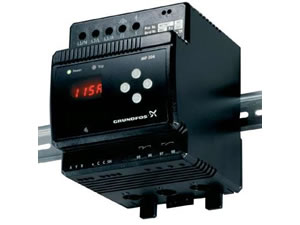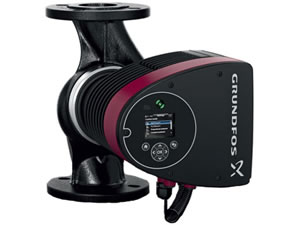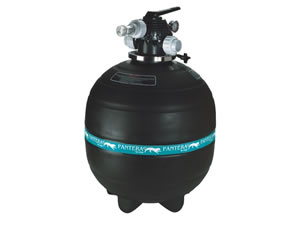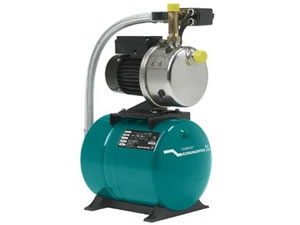Pump Service and Repair
Friedel Drilling doesn’t stop at the drilling. Our goal is to keep our current and future customers satisfied and make it priority to do so. We are a full service company that can keep your water supplied.
Equipment Service
Pump Troubleshooting and Leak Repairs. Friedel Drilling repairs and replaces:
- Motors
- Pumps
- Control Boxes
- Booster Pumps
- Pressure Tanks
- Pipe both Steel and PVC
- Other miscellaneous fittings required for water wells
Pumping Systems
Constant Pressure Systems:
What are storage tank systems?
A typical storage tank system looks like the diagram to the right. When the water level in the storage tank drops about a foot from the top, the top float switch triggers the well pump to come on. The well pump pushes water up through the drop pipe to the surface and into the storage tank. The check valve keeps water from flowing back into the well. When the storage tank is full, the top float switch shuts the well pump off.
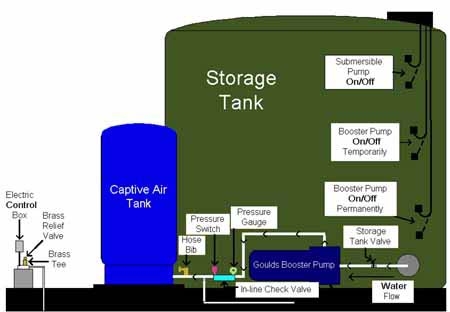
The booster pump system can be either a standard pressure system with a 20 psi range or a constant pressure system with a 2 psi range. When either the pressure switch or pressure sensor turns on the booster pump, it pulls water from the storage tank to supply the pressure tank… that in turn supplies the house or irrigation system. If the storage tank is ever empty, the bottom float switch will shut off the booster pump to prevent it from overheating.
Most storage tank designs stop here. But the problem is that if your well or well pump has a problem and is not properly filling the storage tank, you would never know (unless you were checking on it regularly) until you were completely out of water. So we install a middle float switch in the tank. This float switch will temporarily shut off the booster pump if the water level in the storage tank falls to that point. When that occurs can flip a switch to turn the booster system back on and call us to come service the well or well pump. This provides you the reliability that everyone deserves from their water system.
Benefits of a storage tank system:
- Sulfur gas removal: Well water has a lot of dissolved sulfur gas that gives water a “rotten egg” smell. The storage tank will allow the gas to vent off. Just like carbonation in a soft drink, when the water is not under pressure, the gas will “boil” off.
- Dependability: The pump in the well will start about 1/20th of the time. Starts are very hard on pumps and should be limited as much as possible. This water well system will double or triple the life of the average pump. Additionally, because the well pump is discharging the water into this “zero-pressure” storage tank, you can use a smaller pump in the well than with a non-storage tank water well. Smaller pumps last longer and cost less to replace.
- Backup System: This system is equipped with a backup. If the well pump is unable to fill the tank, the customer is notified, and the reserve water is used until the well can be fixed.
Better pressure and flow: Many water wells do not provide the flow and/or pressure that you desire. The storage tank can fix this problem. - Gravity fed system: If the tank is installed uphill from the home, you will have water even when the power is off.
- Sediment removal: The tank allows sediment to fall out of the water without restricting the pressure. The tank also removes iron from the water. The tank can hold several hundred gallons of sediment before it needs to be cleaned. Cleaning is easily done with a siphon hose.
- Rainwater supplementation: A water well can be used to supplement your rainwater collection system during extended periods of drought. We will set a float switch in the middle of the tank to establish the minimum volume you want to store in your system at all times. The well will maintain that volume in the storage tank while leaving the volume in the top of the tank available for rainwater harvesting.
- Stand Alone Capability: Storage tanks can also be used independently of water wells or rainwater harvesting by having public drinking water delivered in 2000 gallon loads.
Standard Pressure Water Well System
The basic (Standard Pressure) residential water well system (with a steel sleeve wellhead) looks like the diagram below. The submersible pump pushes water up through the drop pipe to the surface. The check valve keeps water from flowing back into the well. The pressure switch turns the pump on when the pressure drops and off when the pressure builds up. This happens over a 20 psi range. The pressure is stored in the pressure tank – typically 84 or 116 gallons. If the system builds too much pressure, the relief valve will release the excess pressure to prevent the pump from being damaged. If the well produces less water than your water demand over a period of time and the well temporarily runs dry, a PumpSaver device will shut off the pump to protect the pump from overheating (and potentially weakening the casing and causing it to collapse). (click here for a pdf file showing a picture of casing collapse).
This has been the tried and true system for generations. It works in almost every situation. But it does have some drawbacks.
If your well produces less water than your demand at any given moment, the PumpSaver will protect the system from damage… but you are still temporarily out of water. Or when the pump finally wears out and needs replaced, you are left without water until the pump can be replaced. In these situations, it is beneficial to have a storage tank system with your well. Click here for information on how a storage tank system can help you.
Another drawback of this standard pressure system is that the pump turns on and off as the pressure in the pressure tank rises and falls by 20 psi. During high usage times (such as long showers or lawn irrigation), this results in a high number of pump starts and stops. These hard starts/stops are what wears pumps out and shortens their lifespan. This 20 psi pressure range can (at best) be frustrating in the shower and (at worst) problematic for your irrigation system since your sprinklers will throw farther/shorter as the pressure rises/falls. This can results in dry/brown spots in your lawn. A solution to all of these problems can be a constant pressure system operated off of a variable frequency drive (VFD).
Constant Pressure Water Well System
You can have constant pressure on your private water well system … just like city water. The pump controller converts single phase 230 volt power to three phase 230 volt power. It varies the frequency to control the speed of the pump. This allows the pump to turn at the speed necessary to provide constant pressure.
As flow demand changes, the motor speed changes to maintain a constant pressure. Standard systems vary the pressure by 20 psi while this system allows a variance of only 2 psi. There are different models of controllers for each type of pump. In some cases, the constant pressure system is less expensive than the standard system.
A typical constant pressure water well system (with a pitless adaptor/Hide-a-well wellhead) looks like the diagram below. The submersible pump pushes water up through the drop pipe to the surface. The check valve keeps water from flowing back into the well. When the pressure in the system drops by 5 psi, a pressure sensor tells the pump controller to turn on the pump.
Then, as described above, the controller varies the speed of the pump to maintain the pressure to within 2 psi of your desired setting (under most conditions). The pressure is stored in a small pressure tank – typically 20 gallons (as opposed to an 84 gallon tank or larger for a basic/standard system). The pump controller is programmed to recognize a variety of conditions that might damage the pump and to temporarily shut off the pump in those situations.
Should the pump controller fail to monitor the pressure and the system builds too much pressure, the relief valve will release the excess pressure.
This system is great for those homeowners who want the assurance of full pressure throughout their showers. It is also beneficial for reverse osmosis (RO) systems. The most common usage of these constant pressure systems is for irrigation. When the pressure varies in the basic/standard system, so does the distance that your sprinkler heads throw the water.
As a result you can get dry/brown patches in your lawn. With the constant pressure system, your sprinklers will throw the same distance every time. Another advantage to the constant pressure system is that as long as there is at least a 1 gpm water demand, your pump stays on. With a basic/standard system you pump could cycle on and off hundreds of times during an irrigation cycle. This can shorten the life of your pump by 2-3 years.
Another advantage to the constant pressure system is that when the pump does start/stop, it does so gradually. This too can lengthen the life of your pump.
Solar Pumping Systems
The days of the windmill are not yet gone. But for most customers they have been replaced by the solar pump. If you need water in a rural setting – whether for your home, your barn, or pasture – where getting electric power is cost prohibitive or if you just want to live “off grid”, then solar might be a good option for you.
Friedel Drilling is a certified Grundfos Pro.


All 4″ pumps have a 5 year warranty!
QUALITY PARTS THAT WILL LAST
Friedel Drilling carries and distributes products and parts for the biggest suppliers and manufacturers in the business. Whatever the problem, Friedel Drilling has the proper solution.






